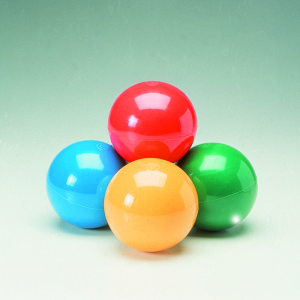Swiss Ball Exercises
A Swiss ball, also known as an exercise ball, stability ball, or physioball, is a somewhat big bouncy ball you find at the gym that will help train different parts of your body.

History of Swiss balls
The Swiss ball was developed in 1963 as a toy called Gymnastik, by Italian engineer Aquilino Cosani. From being a toy, it was later used in pediatric neurological rehabilitative programs developed by Dr. Elseth Kong and Mary Quinton in Europe. Soon, a Swiss physical therapist named Susan Klein used the ball for other medical and rehabilitative purposes, including posture and back rehabilitation. The term “Swiss ball” was developed when some American therapists who visited European clinics during the 1980s discovered about the ball’s use and utilized the same knowledge in North America. Later on, during the 1990s, the Swiss ball was also introduced in the athletic field and currently in the fitness programs.

Benefits of Swiss Balls
The advantages of Swiss balls cover the medical and rehabilitative, as well as fitness and wellness aspects. They include the following benefits:
- In medical and physical therapy, Swiss balls are used to recuperate injuries in the back, hip, and knee.
- In fitness, Swiss ball training helps develop core strength, balance, joint mobility, flexibility, righting reflexes, reaction time, and proprioception.
- Swiss balls also help develop good posture as there is nothing you can lean on with the ball. This then leads to less or treated neck, shoulder, and back pain caused by improper posture.
- It helps burn more calories when used as a chair.
- For expectant moms, it helps posterior position babies switch to normal position, as well as significantly ease discomfort and risks during labor.
- Swiss ball workout helps tone core muscles, including abdominal muscles.
- Unlike other fitness and rehabilitative equipment, Swiss balls are less expensive yet fun, challenging, and effective to use.
- Swiss balls are very versatile and can be used for different exercises, from standing, sitting, to even lying.
- Swiss balls also come in different sizes to help you exercise more efficiently.
Choosing the right Swiss ball size
There are a variety of Swiss ball sizes to choose from. To pick the best Swiss ball size for you, make sure that your knees form a right angle when you sit on the ball with your feet flat on the floor. You may also refer to this list below based on your height:
- Under 5’ tall = 55 cm
- 5’-5’7” = 65 cm
- 5’8”-6’2” = 75 cm
- Over 6’2” = 85 cm
Swiss ball exercises
Here is a list of some exercises you can do with a Swiss ball to start training different parts of your body:
- Swiss ball crunches. This exercise effectively tones your abdominal muscles. It involves sitting on your ball with feet flat on the floor; keeping a straight back with arms crossed on your chest; leaning back to tighten abdominal muscles; and returning to the starting position after holding for three deep breaths.
- Swiss ball crunch-elevated legs. This type of crunch to work on your abs involves elevating legs by putting your calves on top of the ball with your back flat on the floor and your arms crossing your chest working your upper body up and down.
- Triceps dip. Triceps dip with a Swiss ball can be done in two ways to tone and strengthen your triceps muscle on the back of your upper arm. You can use a bench to place your hands on and your calves and ankle resting on a Swiss ball or use a Swiss ball instead of a bench where you place your hands with fingers facing your back.
- Squat and reach. This versatile Swiss ball exercise helps strengthen your abs, arms, and legs. All you need to do is hold the ball with arms reaching out straight, leveled to your face. Slowly squat down as you bring the ball to your left side just above your left foot. Hold for about three breaths and return to standing position. Do the same towards your left side.
- Overhead ball squat. To strengthen your arms and legs, hold your exercise ball with your arms extended over your head and do a traditional squat. The added weight of the ball makes it an effective program to tone your arms and legs.
- Swiss ball bridge. This exercise works your lower back, glutes, hamstrings, and inner thighs. Simply lie with your head and shoulders on the ball with your feet on the ground. Your knees should be over your ankles and your arms crossed. Slowly lift your hips without bending your back hold for three breaths then lower.
- Push-ups. Give your traditional push-up a twist using a Swiss ball and work those shoulders, chest, arms, and abs. Lie facing down with the top part of your thigh over the ball. Align your wrists with your shoulders. Lower your chest as in a traditional push-up and straighten.
- Plank. Rest your forearms on the ball and position the rest of your body as if doing push-ups. With your neck in line with your spine, keep the pose for about 45 seconds to keep your abs strong.
- Birthing ball exercise. This method is used by expectant moms going through labor to help relieve spasms and discomfort of labor. Moms would be better off using birth balls, which are very similar to gym Swiss balls, except that they have non-slip finish. To do the exercise, simply sit on the ball upright and move your pelvis from side to front and back to front. You can also kneel down and lean on your Swiss ball, wrapping your arms around it and swing your pelvis from side to side.
- Backbend stretch. Great for cooling-down, this exercise works on your shoulders, back, hips, and legs. Just lie down on the ball with your face up. Extend your arms overhead with your palms up, letting your fingers reach the floor. Bending your knees, start walking your feet out, then hold for three breaths, and walk your feet in.
Other Swiss ball exercises include ball jog, step-touch, and ski step, which are great cardio exercises. You can also do exercise ball jumping jacks, V-sit with ball, knee tucks, hand-off, hanging knee raise, and more Swiss ball exercises.
Caring and storing your Swiss ball
Proper Swiss ball storage and care will help keep your Swiss ball last a long time. When not in use, keep your Swiss ball in an area away from direct sunlight and where it’s neither too hot nor too cold. When using the Swiss ball, make sure your floor is flat. Make sure the area is free from small sharp objects, as well as heat sources, including fireplaces, that may damage your ball. Remove jewelries, especially rings that could puncture the ball. When cleaning the ball, avoid using abrasive cleaners that could scratch your ball. Instead, use only warm water, mild detergent, and soft cloth.
Swiss ball is a great versatile equipment worth investing at. You can even use one as a chair at home or in the office to work on your neck, shoulder, and back while you’re working.
![]()














